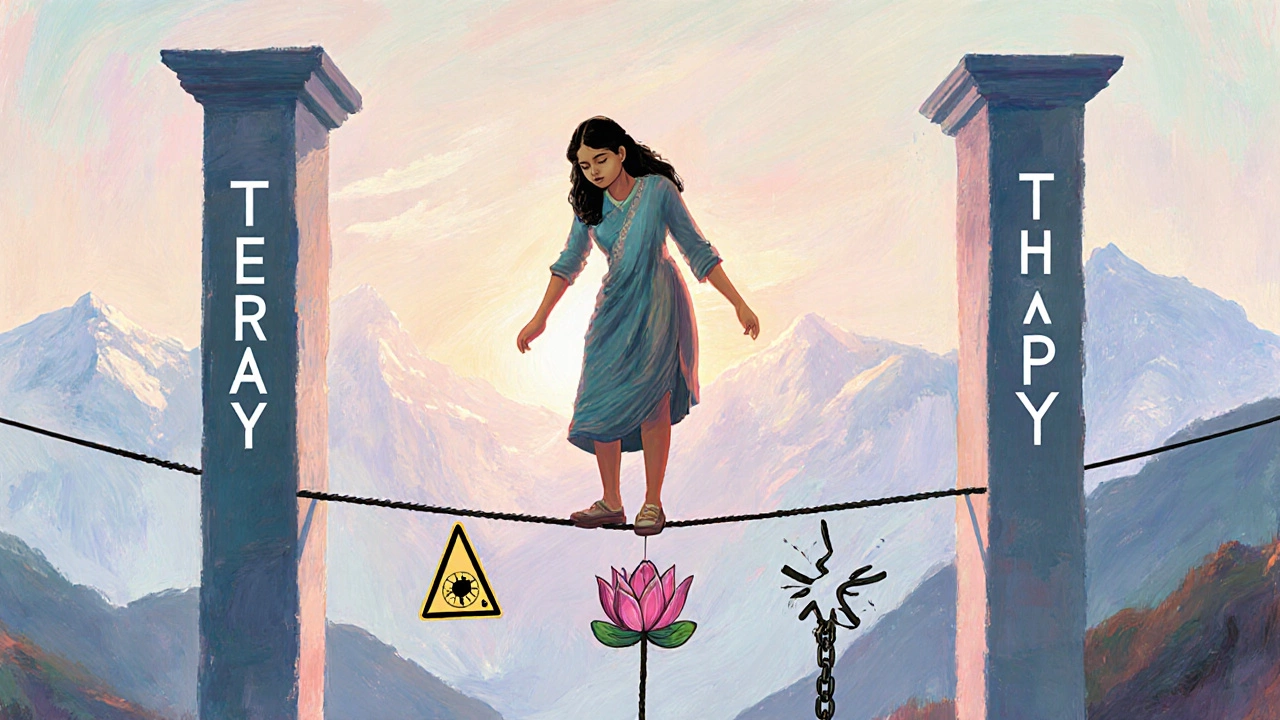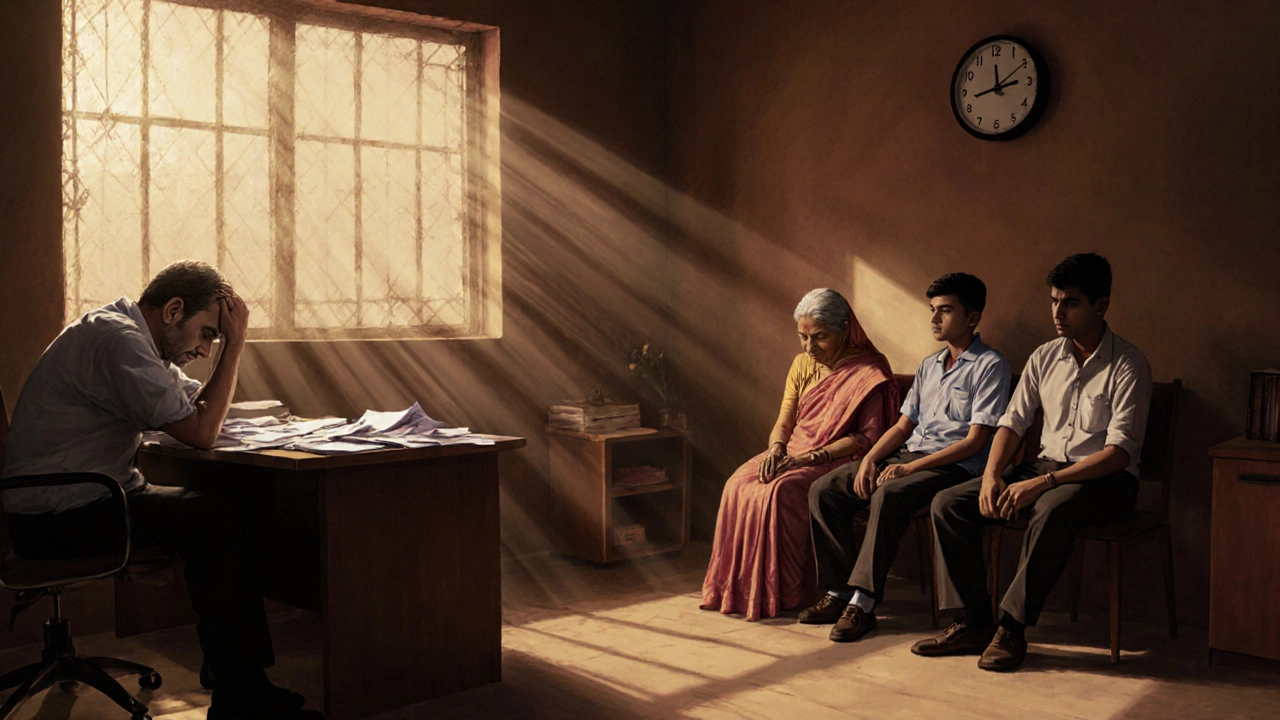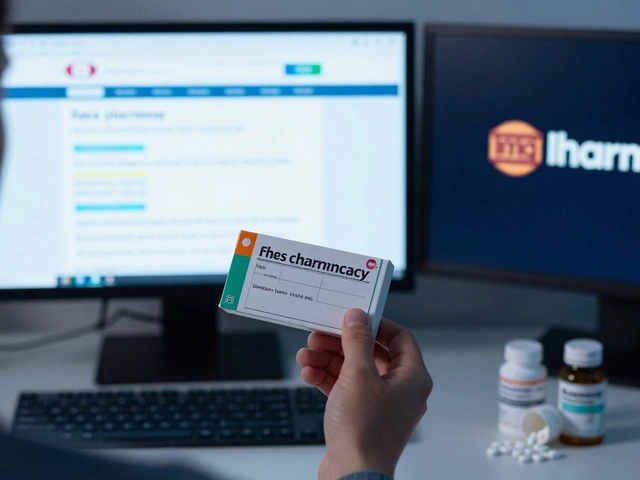Therapy Frequency Checker
This tool helps determine if your current therapy schedule might be excessive and offers suggestions for a healthier approach.
Assessment Details
Quick Takeaways
- Therapy is most effective when frequency matches the client’s needs and capacity.
- Excessive sessions can lead to emotional fatigue, dependence on the therapist, and blurred boundaries.
- Key warning signs include feeling more drained after sessions, loss of personal insight, and increased anxiety.
- Evidence shows that a moderate schedule (once‑weekly or bi‑weekly) yields the best outcomes for most conditions.
- Implementing self‑care routines and periodic treatment reviews helps keep therapy productive.
When a person steps into a therapist’s office, they expect a safe space for growth. Therapy is a structured, professional process that helps individuals explore thoughts, emotions, and behaviors to improve mental well‑being. While the benefits of regular sessions are well documented, the question of “how much is too much?” often gets overlooked. In Bangalore’s bustling clinics, many clients schedule multiple appointments a week, believing that more contact equals faster recovery. The reality is more nuanced-over‑engagement can actually backfire, turning a healing journey into a source of stress.
When Does Therapy Turn Counterproductive?
Most clinicians agree that therapy should feel like a constructive partnership, not a drain. Some tell‑tale signs that the process may be crossing into harmful territory include:
- Feeling emotionally exhausted right after a session instead of gaining clarity.
- Developing a sense of dependency where daily decisions feel impossible without the therapist’s input.
- Noticeable increase in anxiety or depressive symptoms despite continued attendance.
- Loss of personal boundaries, such as checking the therapist’s voicemail at odd hours.
- Therapist reports that the client’s progress has plateaued or regressed.
These symptoms often stem from burnout a state of chronic emotional fatigue caused by overexposure to stressful situations that can affect both client and therapist. When the balance tilts, the very tool meant to restore equilibrium becomes another stressor.
Evidence Behind Over‑Therapy
A 2022 longitudinal study of 3,500 patients across Indian metro centers tracked session frequency and outcomes over 18 months. Researchers found that participants attending more than two sessions per week reported a 12% higher likelihood of experiencing increased anxiety scores, while those on a once‑weekly schedule showed a 27% improvement in standardized depression scales.
Another meta‑analysis published in the Journal of Clinical Psychology examined 45 trials on psychotherapy dosage. The consensus: optimal benefits cluster around 8‑12 sessions per month for acute issues, but diminishing returns appear beyond that point, especially when the therapy model relies heavily on insight‑oriented techniques rather than skill‑building.
These findings underscore a crucial point: the dosage of mental health the overall state of emotional and psychological well‑being interventions matters as much as the quality of care.

Factors That Influence How Much Is Too Much
There isn’t a one‑size‑fits‑all answer. Several variables shape the safe upper limit for therapy sessions:
- Nature of the issue: Acute crises (e.g., trauma processing) may require intensive short‑term work, while chronic conditions (e.g., generalized anxiety) benefit from spaced sessions.
- Therapeutic modality: Approaches like cognitive behavioral therapy a structured, skill‑focused treatment that emphasizes present‑day thought patterns often thrive with weekly meetings, whereas psychodynamic therapy may need longer, less frequent encounters.
- Client’s support system: Those with strong family or community ties can process between sessions, reducing the need for daily appointments.
- Therapist’s style: Some clinicians adopt a collaborative pacing model that adjusts frequency based on real‑time feedback.
- Personal resilience: Individuals with high stress tolerance may handle more frequent sessions without adverse effects.
Understanding these elements helps both client and therapist co‑create a schedule that maximizes growth while minimizing fatigue.
Strategies to Keep Therapy Healthy
If you suspect that the therapy rhythm is veering into harmful territory, try these practical steps:
- Set clear goals: Write down what you aim to achieve in the next month and revisit the list each session.
- Schedule “processing days”: Give yourself at least 48 hours between appointments to apply new insights.
- Use self‑care tools: Journaling, mindful breathing, or brief walks help consolidate therapeutic work.
- Ask for a dosage review: Directly discuss session frequency with your therapist a licensed professional trained to facilitate mental‑health treatment. Most are open to adjusting the plan.
- Consider adjunct approaches: Group therapy, workshops, or evidence‑based apps can supplement individual work without adding more one‑on‑one time.
These tactics help prevent what clinicians refer to as treatment fatigue a weariness that emerges from prolonged, intensive therapeutic exposure, keeping the process energizing rather than draining.
Recommended vs. Excessive Session Frequency
| Metric | Recommended Schedule | Excessive Schedule |
|---|---|---|
| Sessions per week | 1-2 (weekly or bi‑weekly) | 3+ (multiple per week) |
| Typical session length | 45‑60 minutes | 60‑90 minutes (often longer due to fast‑track focus) |
| Client‑reported benefit | High (30‑40% symptom reduction) | Variable (10‑20% or possible regression) |
| Risk of burnout | Low | Elevated (30%+ report fatigue) |
| Therapist workload sustainability | Manageable | Strain leading to reduced session quality |
These numbers are not strict rules but serve as a practical guide. If you find yourself consistently in the “Excessive Schedule” column, it’s time to reassess.
Frequently Asked Questions
Can more therapy sessions speed up recovery?
In some acute scenarios-like crisis intervention after a traumatic event-intensive short‑term therapy (daily or every other day) can provide rapid stabilization. However, for most chronic conditions, the evidence points to diminishing returns after a certain point, and frequent sessions may increase emotional fatigue.
What’s the difference between therapy burnout and normal tiredness?
Therapy burnout includes persistent feelings of dread before sessions, loss of insight, and a sense that the therapist’s input no longer adds value. Normal tiredness usually dissipates after rest and does not affect motivation to engage in treatment.
Should I tell my therapist if I feel the sessions are too frequent?
Absolutely. Open communication is a cornerstone of effective therapy. Most therapists welcome feedback and will help redesign the schedule to suit your needs.
Are there alternative formats to reduce session load?
Group workshops, tele‑health check‑ins, and self‑guided CBT apps can complement individual therapy, offering support without adding extra one‑on‑one hours.
How can I gauge if my therapy is becoming counterproductive?
Track mood changes, energy levels, and progress toward personal goals after each session. If you notice a steady decline in these areas, consider discussing dosage with your therapist.
Understanding that harmful therapy is a real possibility empowers you to shape a mental‑health journey that feels supportive, sustainable, and truly healing.








